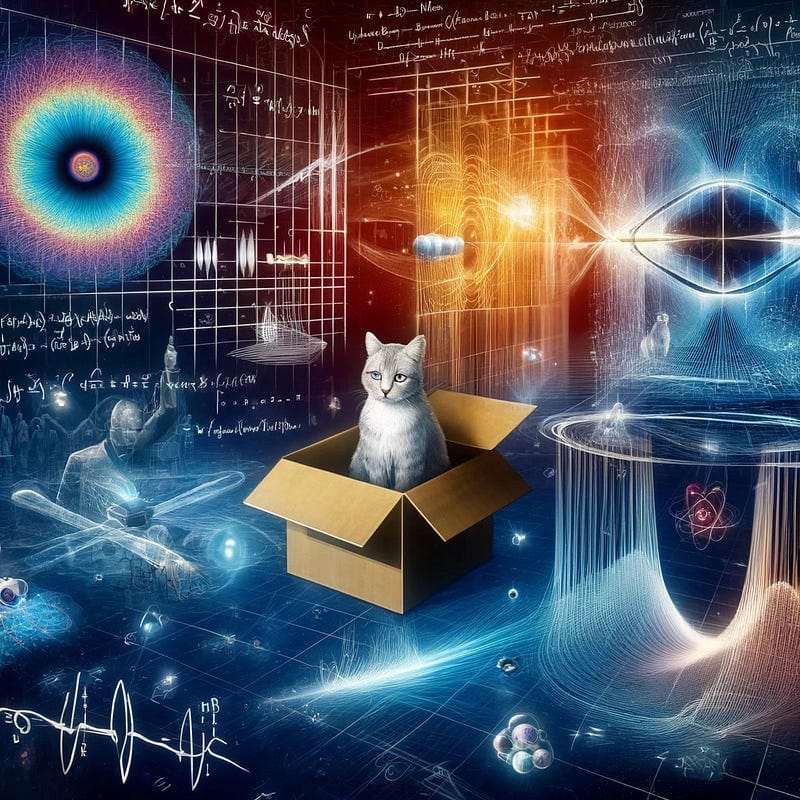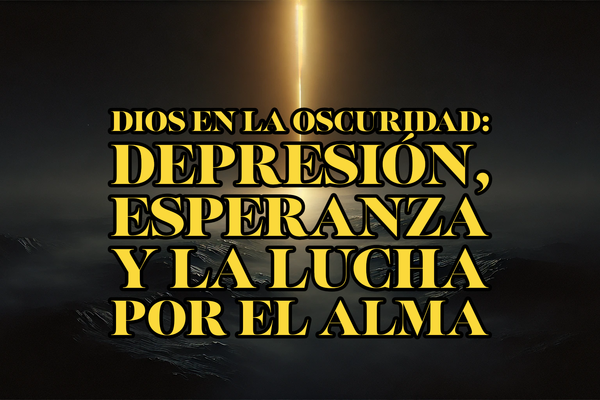The Implications of Quantum Physics on Traditional Logic: Schrödinger, String Theory, and the…
Quantum physics has revolutionized our understanding of the universe, challenging the very foundations of traditional logic that have…

The Implications of Quantum Physics on Traditional Logic: Schrödinger, String Theory, and the Double-Slit Experiment
Quantum physics has revolutionized our understanding of the universe, challenging the very foundations of traditional logic that have underpinned scientific inquiry for centuries. By delving into the subatomic realm, quantum physics reveals a world where particles can exist in multiple states simultaneously, and the act of observation can alter the very nature of reality. This profound shift from classical to quantum perspectives has significant implications for how we perceive the universe and the laws governing it. This article explores how key concepts in quantum physics, such as Schrödinger’s cat, string theory, and the double-slit experiment, upend classical notions of reality, causality, and logic, inviting us to rethink the fundamental principles that have long guided scientific thought. Through these quantum phenomena, we uncover a realm where the bizarre becomes the norm, prompting a reevaluation of the very nature of existence and the limits of human knowledge.
The Classical Worldview: A Brief Overview
Traditional logic and classical physics rest on a few fundamental principles:
- Determinism: The idea that given the initial conditions and laws of nature, future events can be predicted with certainty.
- Objectivity: The assumption that objects exist independently of observation.
- Locality: The belief that objects are only directly influenced by their immediate surroundings.
These principles have been effective in explaining everyday phenomena and the behavior of macroscopic objects. However, at the quantum level, these notions begin to falter.
Schrödinger’s Cat: The Paradox of Superposition
Erwin Schrödinger’s famous thought experiment, Schrödinger’s cat, vividly illustrates the counterintuitive nature of quantum mechanics. In this scenario, a cat is placed in a sealed box with a radioactive atom, a Geiger counter, a vial of poison, and a hammer. If the Geiger counter detects radiation, the hammer breaks the vial, releasing the poison and killing the cat. Quantum mechanics suggests that until the box is opened and the cat is observed, it exists in a superposition of being both alive and dead simultaneously.
This paradox challenges the classical notion of determinism. According to traditional logic, the cat must be either dead or alive, not both. Quantum superposition, however, posits that particles can exist in multiple states at once until observed. This concept undermines the binary logic that something must be either one way or another but cannot be both.
The Double-Slit Experiment: The Role of the Observer
The double-slit experiment further complicates the picture. When particles such as electrons are fired at a barrier with two slits, they create an interference pattern on a screen behind the barrier, suggesting that each particle behaves as a wave, passing through both slits simultaneously. However, if detectors are placed at the slits to observe which slit a particle passes through, the interference pattern disappears, and particles behave like classical particles, passing through one slit or the other.
This experiment highlights the peculiar role of the observer in quantum mechanics. In classical physics, the act of observation is passive; it does not affect the observed system. In quantum mechanics, however, observation collapses the wave function, determining the state of the system. This suggests a fundamental interconnectedness between the observer and the observed, challenging the classical idea of objectivity and the independence of reality from observation.
String Theory: Unifying Physics and Beyond
String theory offers a framework that attempts to reconcile quantum mechanics with general relativity. It posits that the fundamental constituents of reality are not point-like particles but rather one-dimensional “strings” that vibrate at different frequencies. These strings give rise to the various particles and forces observed in the universe.
While string theory remains a theoretical construct with limited experimental evidence, it introduces radical ideas that challenge traditional logic. For instance, string theory implies the existence of multiple dimensions beyond the familiar three spatial dimensions and one-time dimension. Some versions of string theory suggest up to 11 dimensions, radically altering our understanding of space and time.
Moreover, string theory’s concept of “branes” (multi-dimensional objects) and the possibility of parallel universes further stretch the limits of traditional logic. If true, these ideas imply that our universe is just one of many, each with its own set of physical laws and constants. This multiplicity of universes (the multiverse) challenges the uniqueness and absolute nature of the laws of physics as traditionally conceived.
Implications for Traditional Logic
The developments in quantum physics prompt us to reconsider the foundations of traditional logic:
1. Non-Determinism: Quantum mechanics introduces inherent uncertainty, as exemplified by Heisenberg’s Uncertainty Principle, which states that certain pairs of physical properties (like position and momentum) cannot be simultaneously known to arbitrary precision. This inherent randomness challenges the deterministic view of the universe.
2. Non-Locality: Quantum entanglement demonstrates that particles can instantaneously affect each other, regardless of the distance separating them. This phenomenon violates the classical notion of locality and suggests that the universe is more interconnected than previously thought.
3. Contextually: The outcome of quantum measurements depends on the specific experimental setup, highlighting the contextual nature of quantum phenomena. This interdependence between the observer and the observed system suggests that objective reality is not independent of measurement.
4. Superposition and Complementarity: Quantum entities can exist in multiple states simultaneously (superposition), and certain properties can only be fully described in terms of complementary pairs (e.g., wave and particle nature). This duality challenges the classical law of excluded middle, which asserts that a proposition must be either true or false, with no middle ground.
Bridging Quantum and Classical Logic
Despite these challenges, efforts have been made to reconcile quantum and classical logic. Quantum logic, a formal system developed by physicists and philosophers, modifies classical logic to accommodate the peculiarities of quantum mechanics. It introduces new logical operators and principles that reflect the probabilistic and non-deterministic nature of quantum phenomena.
For instance, quantum logic allows for propositions that can be both true and false to varying degrees, reflecting the superposition of states. It also incorporates the concept of entanglement, where the truth value of one proposition depends on the state of another, interconnected proposition.
Additionally, the development of quantum computing leverages the principles of quantum mechanics to perform computations that would be infeasible for classical computers. Quantum bits (qubits) can exist in superposition, enabling quantum computers to process a vast number of possibilities simultaneously. This capability has profound implications for fields ranging from cryptography to artificial intelligence.
Quantum physics, through concepts like Schrödinger’s cat, the double-slit experiment, and string theory, challenges and expands the boundaries of traditional logic. It compels us to reconsider our notions of reality, causality, and observation, opening up new avenues for understanding the universe. The superposition and entanglement phenomena defy the deterministic worldview that has dominated science for centuries, suggesting that reality is far more complex and interconnected than we ever imagined.
As we continue to explore these quantum phenomena, the implications for technology, philosophy, and our overall comprehension of the cosmos are profound. Quantum computing, for example, promises to revolutionize the way we process information, solve problems, and develop new technologies. The philosophical implications push us to rethink concepts of identity, free will, and the very nature of consciousness.
While the reconciliation of quantum and classical logic remains an ongoing endeavor, the insights gained from quantum physics continue to revolutionize our worldview, pushing the limits of human knowledge and imagination. The quest to unify these disparate frameworks — perhaps through a comprehensive theory of quantum gravity — represents one of the most ambitious scientific pursuits of our time.
As we delve deeper into the quantum realm, we may uncover even more profound truths about the nature of reality and the underlying logic that governs it. This journey is not merely about expanding our scientific understanding; it is about redefining our place in the universe. Quantum physics invites us to embrace uncertainty and complexity, to appreciate the elegance of a universe that is both infinitely knowable and profoundly mysterious. The path ahead promises to be as challenging as it is exhilarating, but with each discovery, we inch closer to a more complete understanding of the fabric of reality.



